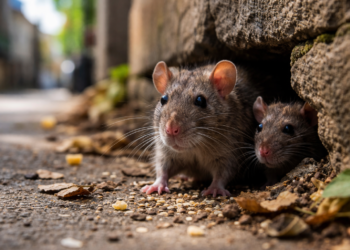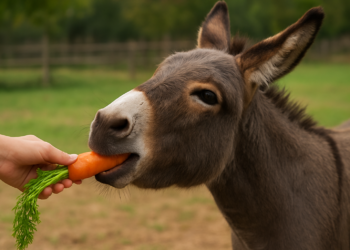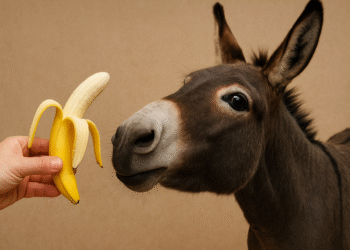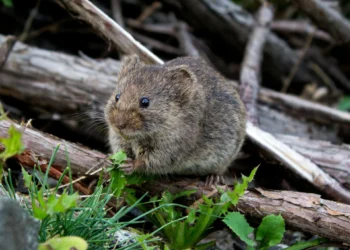Leopard geckos are fascinating creatures that make great pets for reptile enthusiasts. They are easy to care for and have a docile temperament, which makes them a popular choice for beginners. One of the most important aspects of caring for a leopard gecko is providing them with a nutritious diet. While live insects like crickets and mealworms are the most common food source for leopard geckos, some owners may wonder if canned crickets are a suitable alternative.
Canned crickets are a convenient option for pet owners who don’t want to deal with the hassle of keeping live insects. They are readily available at most pet stores and can be stored for long periods of time. However, when it comes to feeding leopard geckos, it’s important to consider the nutritional value of canned crickets. While they may be a good source of protein, they may not provide all the necessary nutrients that live insects do. In this article, we will explore the topic of whether or not leopard geckos can eat canned crickets and provide some insights into the pros and cons of this feeding option.
Leopard Gecko Dietary Basics

Leopard geckos are insectivores and require a diet that is high in protein and low in fat. In the wild, they primarily feed on insects such as crickets, mealworms, and waxworms. In captivity, it is important to provide them with a balanced diet to ensure they receive all the necessary nutrients.
Nutritional Requirements
Leopard geckos require a diet that is high in protein, calcium, and vitamin D3. Protein is necessary for growth and maintenance of their muscles, while calcium and vitamin D3 are essential for proper bone development and health. A lack of calcium can lead to metabolic bone disease, which can be fatal.
When feeding your leopard gecko, it is important to provide a variety of insects to ensure they receive all the necessary nutrients. Gut-loading the insects with a nutritious diet before feeding them to your gecko can also help increase their nutritional value.
Feeding Frequency
Leopard geckos should be fed every 2-3 days, with juveniles requiring more frequent feedings than adults. It is important not to overfeed your gecko, as obesity can lead to health problems. A good rule of thumb is to offer them as many insects as they can eat in 10-15 minutes.
While canned crickets may be convenient, they are not a suitable replacement for live insects. Canned crickets lack the nutritional value and stimulation that live insects provide. It is best to stick to feeding your leopard gecko live insects to ensure they receive a balanced diet.
Canned Crickets as a Food Source

Canned crickets are a popular food source for many reptile owners, including those who keep leopard geckos. They offer a convenient and easy-to-store alternative to live insects, but are they a good choice for your pet? Let’s take a closer look.
Pros of Canned Crickets
One of the biggest advantages of canned crickets is their convenience. They can be stored for long periods of time without the need for special care or attention. This makes them a great option for pet owners who travel frequently or who don’t have easy access to live insects.
Canned crickets are also less likely to carry parasites or diseases than live insects, which can be a concern for some pet owners. They are also less likely to escape and infest your home, which can be a common problem with live insects.
Cons of Canned Crickets
While canned crickets may be convenient, they do have some downsides. One of the biggest concerns is their nutritional value. Canned crickets are often less nutritious than live insects, which can lead to health problems for your pet over time.
Canned crickets also lack the stimulation and enrichment that live insects provide. Hunting and catching prey is a natural behavior for leopard geckos, and canned crickets don’t offer the same level of physical and mental stimulation.
Another concern is the texture of canned crickets. Some leopard geckos may not like the texture of canned crickets and may refuse to eat them. It’s important to monitor your pet’s behavior and appetite if you decide to feed them canned crickets.
In conclusion, while canned crickets may offer some convenience, they should not be the sole source of food for your leopard gecko. It’s important to provide a varied and nutritious diet that includes live insects and other appropriate food items.
Preparing Canned Crickets for Feeding

When it comes to feeding our leopard geckos, we want to make sure they are getting the best nutrition possible. While live crickets are a great option, canned crickets can also be a convenient alternative. However, before feeding canned crickets to our geckos, it’s important to properly prepare them.
First, we need to make sure the canned crickets are at room temperature before feeding. This can be achieved by letting the can sit out for about 30 minutes before opening it.
Next, we want to remove any excess moisture from the crickets. We can do this by placing them on a paper towel and gently patting them dry. This step is important because excess moisture can lead to bacterial growth and potentially harm our geckos.
Once the crickets are dry, we can place them in a feeding dish and add a calcium supplement. It’s important to provide our geckos with calcium to prevent any potential health issues, such as metabolic bone disease.
Overall, canned crickets can be a convenient option for feeding our leopard geckos, but we must properly prepare them to ensure our geckos are receiving the best nutrition possible. By following these simple steps, we can confidently feed our geckos canned crickets as part of their diet.
Health Considerations When Feeding Canned Crickets
When it comes to feeding leopard geckos, it is important to consider the nutritional value of the food they are consuming. While canned crickets may seem like a convenient option, there are some health considerations to keep in mind.
Firstly, canned crickets may not be as nutritious as live crickets. This is because the canning process can reduce the nutritional value of the crickets, particularly their protein content. As leopard geckos require a diet high in protein, it is important to ensure that they are receiving enough of this nutrient.
Another consideration is the moisture content of canned crickets. Canned crickets may be more dry than live crickets, which can lead to dehydration in leopard geckos. It is important to ensure that your leopard gecko has access to fresh water at all times to prevent dehydration.
In addition, canned crickets may contain preservatives or other additives that could be harmful to leopard geckos. It is important to carefully read the label and ensure that the canned crickets you are feeding your gecko do not contain any harmful ingredients.
Overall, while canned crickets may be a convenient option for feeding leopard geckos, it is important to consider the potential health implications. It is recommended to feed live crickets whenever possible to ensure that your gecko is receiving the best possible nutrition.
Alternatives to Canned Crickets
When it comes to feeding leopard geckos, canned crickets can be a convenient option, but they may not be the best choice for providing essential nutrients. Fortunately, there are several alternatives to canned crickets that can provide a balanced diet for your gecko.
Live Prey Options
Live prey is a great option for leopard geckos as it provides a more natural diet and allows them to exhibit their hunting behavior. Some live prey options for leopard geckos include:
- Mealworms: These are a staple food for leopard geckos and are readily available at most pet stores. They are high in protein and fat, which makes them a great source of energy for your gecko.
- Dubia Roaches: These are a great alternative to crickets as they are high in protein and low in fat. They are also easy to digest and can be a good option for geckos with sensitive stomachs.
- Waxworms: These are a high-fat treat that should be fed sparingly. They are a good option for geckos that need to gain weight or for those that are recovering from illness.
Commercial Diets
Commercial diets are a convenient option for leopard gecko owners as they are easy to store and provide a balanced diet. Some commercial diets for leopard geckos include:
- Repashy Superfoods: This is a powdered diet that can be mixed with water to create a gel-like substance. It contains a balanced mix of protein, fat, and vitamins and minerals.
- Pangea Fruit Mix: This is a powdered diet that is designed for fruit-eating geckos, but can also be fed to leopard geckos. It contains a mix of fruits, insects, and vitamins and minerals.
- Zoo Med Natural Grassland Tortoise Food: This is a pellet diet that is designed for tortoises, but can also be fed to leopard geckos. It contains a mix of grasses, vegetables, and vitamins and minerals.
In conclusion, while canned crickets may be a convenient option for feeding leopard geckos, there are several alternatives that can provide a more balanced diet. Live prey options and commercial diets can both be great options for providing essential nutrients to your gecko.
Understanding Leopard Gecko Feeding Behaviors
Leopard geckos are insectivores and require a diet high in protein. In the wild, they feed on a variety of insects such as crickets, mealworms, and waxworms. In captivity, it is important to provide them with a balanced diet to ensure they receive all the necessary nutrients.
When it comes to feeding leopard geckos, it is important to understand their feeding behaviors. Leopard geckos are nocturnal and prefer to feed at night. They have a slow metabolism and do not require frequent feedings. Adults can be fed every two to three days, while juveniles may require daily feedings.
Leopard geckos are opportunistic feeders and will eat almost anything that moves. However, it is important to provide them with appropriate-sized prey. Prey that is too large can cause digestive issues, while prey that is too small may not provide enough nutrition.
Canned crickets are a convenient option for feeding leopard geckos. They are easy to store and do not require much preparation. However, it is important to note that canned crickets may not be as nutritious as live crickets. Canned crickets may also lack the necessary moisture that leopard geckos require.
In summary, understanding leopard gecko feeding behaviors is crucial for providing them with a balanced diet. While canned crickets may be a convenient option, it is important to provide them with a variety of live insects to ensure they receive all the necessary nutrients.
Safe Feeding Practices for Leopard Geckos

When it comes to feeding our leopard geckos, it is important to follow safe feeding practices to ensure their health and well-being. Here are some tips to keep in mind:
- Variety is key: While leopard geckos can thrive on a diet of live insects, it is important to offer a variety of insects to ensure they are getting a balanced diet. Some good options include crickets, mealworms, waxworms, and dubia roaches.
- Gut-load insects: Before feeding insects to your leopard gecko, it is important to gut-load them. This means feeding the insects a nutritious diet to ensure they are passing on essential nutrients to your gecko.
- Dust insects with supplements: To ensure your leopard gecko is getting all the necessary vitamins and minerals, it is important to dust their insects with supplements. This can include calcium powder, multivitamin powder, and more.
- Avoid feeding wild-caught insects: Wild-caught insects can carry parasites and diseases that can be harmful to your leopard gecko. Stick to feeding insects that are bred specifically for pet consumption.
- Monitor feeding habits: It is important to monitor your leopard gecko’s feeding habits to ensure they are eating enough and not overeating. Offer food in appropriate portions and remove any uneaten insects after feeding.
When it comes to canned crickets, it is important to note that they can be a convenient option for pet owners. However, it is recommended to offer live insects whenever possible, as they provide more nutritional value and exercise for your leopard gecko. If you do choose to feed canned crickets, be sure to check the ingredients list and avoid any that contain preservatives or other harmful additives.
Frequently Asked Questions
What are the best dietary options for leopard geckos?
Leopard geckos are insectivores, meaning they primarily eat insects. The best dietary options for leopard geckos are live insects such as crickets, mealworms, and dubia roaches. It is important to provide a varied diet to ensure that your leopard gecko receives all the necessary nutrients.
Are mealworms a suitable food choice for leopard geckos?
Mealworms are a common food choice for leopard geckos, but they should not be the only food source. Mealworms have a high-fat content and are low in calcium, which can lead to health issues if fed exclusively. It is recommended to feed mealworms in moderation and to gut-load them with nutritious foods before feeding them to your leopard gecko.
What variety of insects can be safely fed to leopard geckos?
Leopard geckos can safely eat a variety of insects, including crickets, mealworms, dubia roaches, superworms, and waxworms. It is important to avoid feeding wild-caught insects, as they may have been exposed to pesticides or other harmful substances.
Can leopard geckos have fruits and vegetables as part of their diet?
Leopard geckos are not able to digest fruits and vegetables effectively and should not be included as part of their regular diet. However, they may occasionally eat small amounts of fruits as a treat.
What are the potential risks of feeding dead crickets to leopard geckos?
Dead crickets can pose a risk to leopard geckos if they have died from disease or have been contaminated with harmful substances. It is recommended to only feed live insects to your leopard gecko to avoid any potential health risks.
How should crickets be presented to leopard geckos during feeding times?
Crickets should be presented to leopard geckos in a shallow dish or feeding bowl. It is important to provide enough crickets for your leopard gecko to eat in one sitting and to remove any uneaten insects after feeding time. It is also recommended to dust the crickets with calcium and vitamin supplements before feeding them to your leopard gecko.










